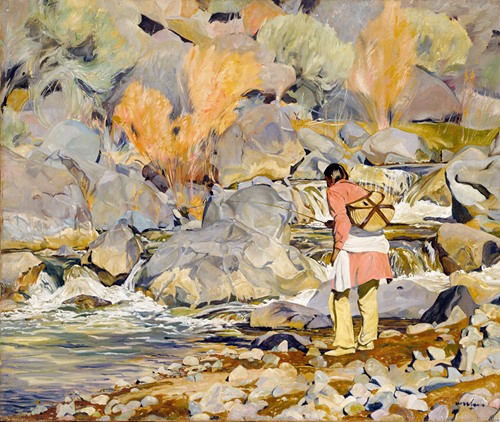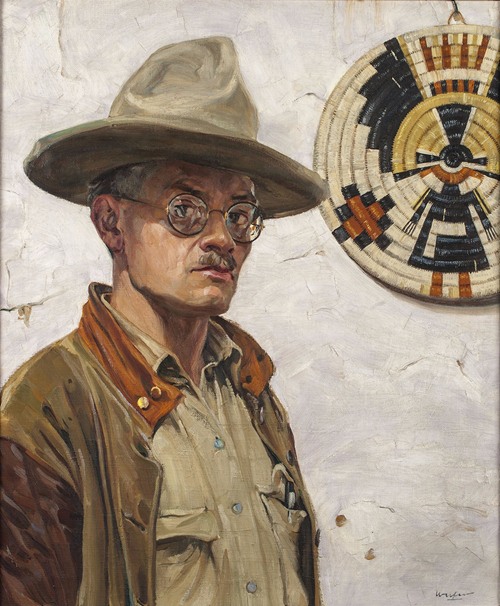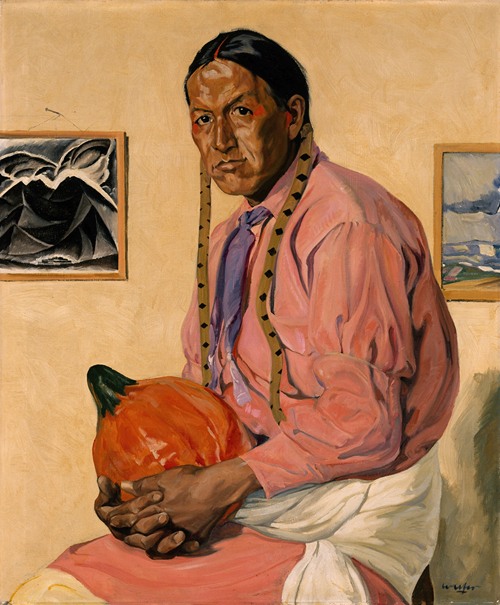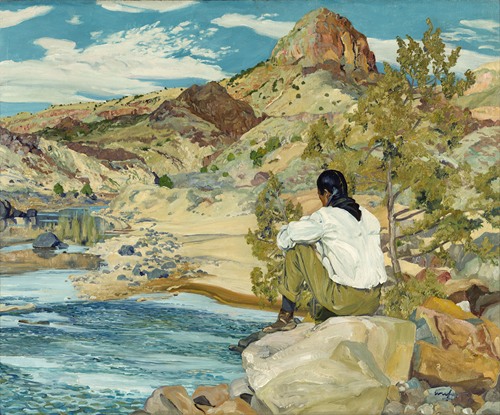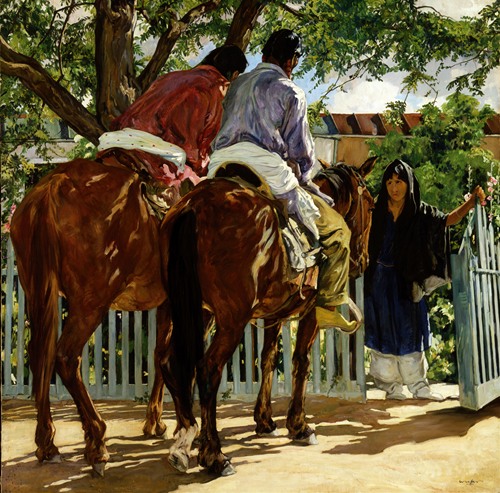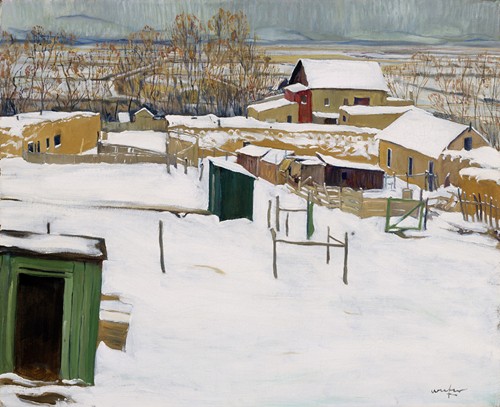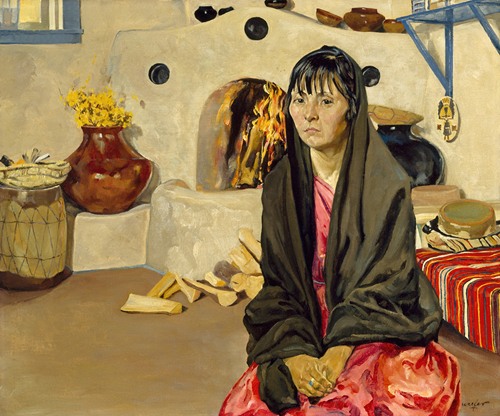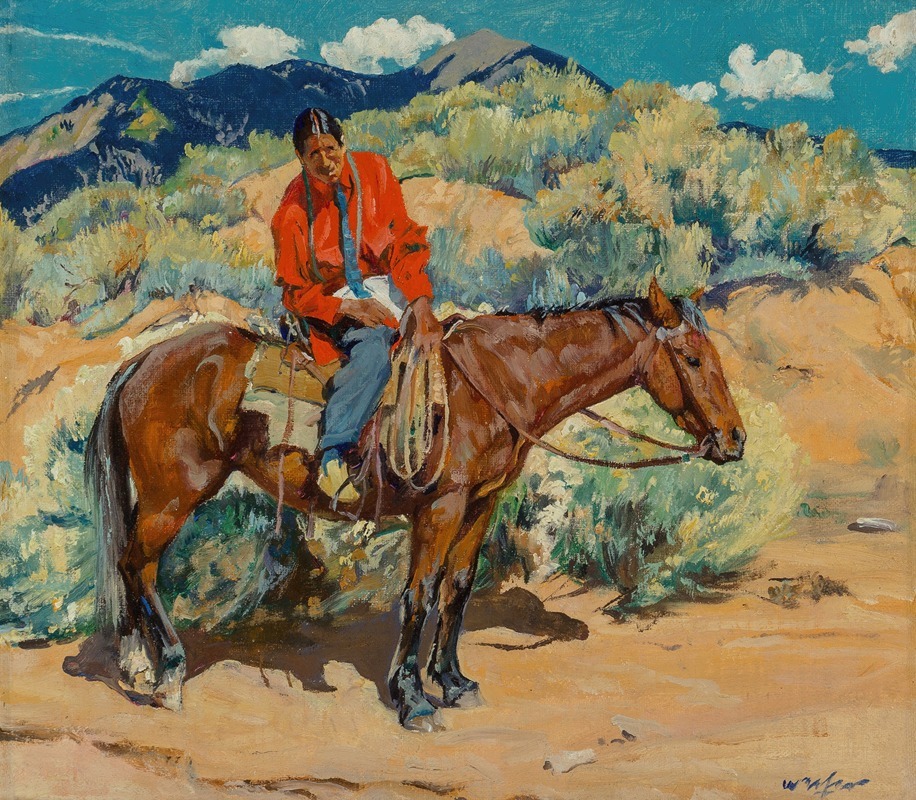
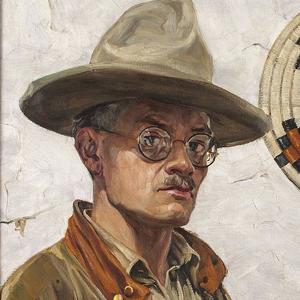
Walter Ufer was an American artist based in Taos, New Mexico. His most notable work focuses on scenes of Native American life, particularly of the Pueblo Indians.
Ufer was born in Germany and moved with his family to Louisville, Kentucky in 1880 where Ufer grew up. After an apprenticeship as a lithographer, he went to Europe where he was a traveling journeyman. Like many of his fellow artists with ties to Indianapolis's German-American community, he went to Germany to study; he trained in Hamburg and Dresden. When he returned to America, he worked as a printer in Chicago and taught school, and later took classes in fine arts. After a brief time in Chicago, he returned to Munich in 1911 for further study as an artist. Upon his return to the US, he traveled to Taos in 1914. There he became one of the "Taos Ten", and associated with the Taos Society of Artists. In 1917 Ufer served as president of Chicago's Palette and Chisel, Academy of Fine Arts.
In addition to his art, Ufer is known for his social activism. He helped victims of the 1918 flu epidemic being treated in the local schoolhouse and collected money for miners on strike in Madrid, New Mexico. He was also a member of the Industrial Workers of the World and follower of Leon Trotsky.
Ufer died from appendicitis. At his request, he was cremated and his ashes were spread in an arroyo (creek) near Mabel Dodge Luhan's house in Taos.
